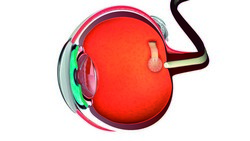Biomedical advances through use of graphene
Graphene is the thinnest, strongest — but at the same time lightest — substance, impermeable to molecules but amenable to chemical modification. Alongside its high surface area and biocompatibility, these unique properties render graphene a very promising starting material for a variety of biomedical applications. The Graphene Flagship’s Biomedical Technologies Work Package, led by Prof. Kostas Kostarelos at the www.nanomedicinelab.com (Nanomedicine Lab) of the University of Manchester (UK) and Prof. Jose A Garrido of the Catalan Institute of Nanoscience and Nanotechnology (Spain), explores the use of graphene and graphene-related materials in the design of neural implant devices for recording and stimulating electrical activity, combined with localised drug delivery. As Prof. Kostarelos explains, “The aim of this Work Package is to develop the next generation of neural implants that combine recording and stimulation functionalities, together with therapeutic capabilities.″ Neural implants have emerged as a promising approach for detecting, monitoring and treating (via electrical stimulation) a number of different sensory and motor disorders of the central and peripheral nervous system. These implants serve as the interface between the neural tissue, nerve fibres or individual neurons and external devices, used to record, monitor and stimulate brain activity to intervene with central nervous system functions. Innovative graphene-based devices Research activities of leading scientists across Europe involved in the Graphene Flagship project have focused on materials engineering, implant technology and functionality for applications in the fields of neurology, ophthalmology and surgery. Their aim is to implement these devices for the diagnosis and treatment of various diseases like epilepsy, Parkinson’s, blindness, rheumatoid arthritis and diabetes. Graphene is a versatile substrate that can take many forms with different properties, excellent for generating 2D materials that can be used in recording and stimulation devices. The electrical conductivity and flexibility of single layer graphene nanosheets greatly facilitate the recording of electrical activity in neuronal tissue with high fidelity. For electrical stimulation of the nervous system — as in the case of Parkinson’s patients who are unresponsive to levodopa — scientists have chosen reduced graphene oxide. Graphene oxide produces flexible yet porous nanoscale substrates of high capacitance, capable of providing stimulation for longer periods. Partners in this work package are exploring the technology to develop a retinal implant for people who have lost their sight due to retinal disease. A camera collects images from the environment and converts them into electrical stimulation, delivered through graphene microelectrodes. Furthermore, the tuneable characteristics of suspension graphene and its capacity to be functionalised with oxygen can be exploited for drug delivery. Anti-inflammatory drugs, neurotransmitters or neural attractants are linked to hydrogel-coated graphene sheets and released at different speeds upon implantation. The future of graphene in the biomedical field Research in the use of graphene and 2D materials for biomedical applications is expanding in diverse fields ranging from monitoring wearable devices to drug delivery and cancer diagnostics. Research work in the Biomedical Technologies Work Package is based on the extraordinary properties of graphene which make it ideal for recording and stimulating neural tissues in pathological diseases like Parkinson’s and epilepsy. “Undoubtedly, graphene is paving the way for novel diagnosis and treatments, helping to improve the quality of life for millions of patients globally″ concludes Prof. Kostarelos. In view of the future, he emphasises that “collaboration with industry is essential to guide innovations and direct research efforts towards the most commercially promising applications″.
Keywords
Graphene Flagship, graphene, biomedical applications, brain implant, retinal implant, prostheses







